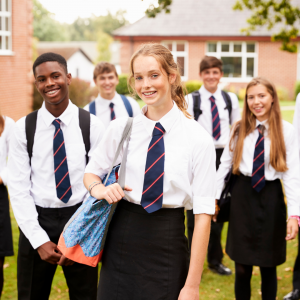Uniforms are the smart choice
 When I read that a peer of the Realm had said school uniforms were ‘repressive’ and should be abolished so pupils can ‘find their own style’ I rolled my eyes.
When I read that a peer of the Realm had said school uniforms were ‘repressive’ and should be abolished so pupils can ‘find their own style’ I rolled my eyes.
This canard comes around every so often, usually from the middle classes who can afford to buy their children the trendiest, most fashionable gear.
The latest to express this opinion was the Earl of Clancarty who, as a member of the House of Lords, wears an astonishing-looking uniform himself.
He was reacting to the sensible new law – the Education (Guidance About Costs of School Uniform) Bill – that aims to make school uniforms more affordable.
It does this by legally requiring schools to keep branded items, such as blazers, to a minimum and to make arrangements for second-hand items to be available.
There are some very good reasons why school uniforms are important and should be retained.
Firstly, they help mask poverty and wealth, which makes things more equitable. A poor student wears the same as a rich student; no one can be judged as better or worse than anyone else due to their attire.
Children are all treated the same by the school and progress is determined by learning not looks.
When uniforms are abolished the poorer students could be victims of bullying because they are not wearing the latest trainers, for example.
Children have plenty of opportunities to express themselves outside of school.
Furthermore, uniforms teach children to be smart, tidy and clean; it is hard to enforce those disciplines when every child is wearing something different.
Although there is a cost, items can be handed on or purchased second hand as the new government guidance suggests. The government could help further by providing a grant to the children on Pupil Premium and free school meals.
Primary school uniforms often only involve a sweatshirt or top as a standard item and this is relatively cheap. Secondary school uniforms can also be simplified to cut costs.
Uniforms are also practical and suited for the job they do. Wearing the required clothing prevents children from coming to school with all sorts of impractical garments that do not suit all the activities of a school.
Safety is also enhanced. If a child fails to reach their school or does not return home on time it means they can be easily identified in the community.
Lord Clancarty wants children to ‘find their own style’ – fine, but that is not what they should be doing at school.